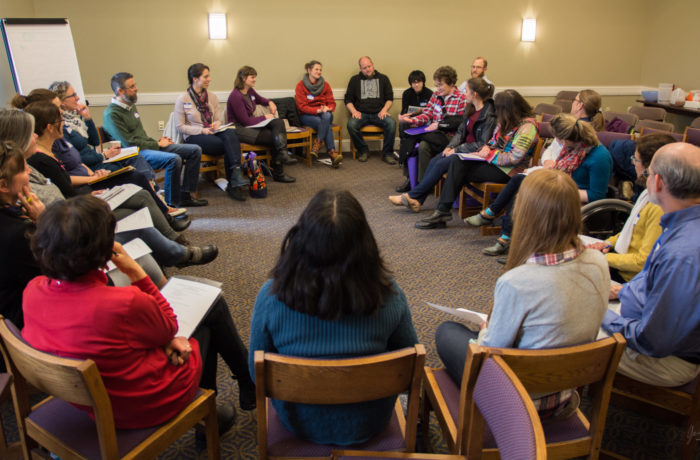Buzzzz. My overly-cheerful-for-11:00-p.m. light hummed annoyingly over my desk, illuminating a dense packet of Aristotelean physics. With an internal sigh, I attempted to sink into the rigid, yet standard, St. Michael’s desk chair — requisite equipment for any townhouse — and reach for my pencil. Oddly enough, I came away with my phone instead, Facebook already loading beneath my thumb.
Like any true college senior, I treated myself to a pre-homework social media break, because, you know, it was hard work getting all this stuff laid out. I did not see who updated their profile picture or receive any notifications, the same old frivolities that change, but don’t really change, no matter how often you check your phone. Instead, I read two headlines before I had to put down my phone.
Bold, black text filled my screen. “Trump issues EPA media blackout and suspend’s agency’s grants,” and “News Media, Target of Trump’s Declaration of War, Expresses Alarm.” Immediately, I felt my stomach turn.
I feel sick because in his three weeks in office thus far, President Trump has decided that it is not enough for the United States to be engaged in the War on Terror. It is not enough to currently be in conflict in Pakistan. Not enough to fight in Libya, Syria, Iraq, Nigeria, and Afghanistan, and subsequently suspend people from many of those nations from passing through our borders. It is not enough to build a wall along the southern edge of our nation. Now, we must fight yet another enemy. The American media.
As a fledgling journalist, I am appalled that the career I am pursuing has been condemned by the man who is now leading my country. The man who supposedly wants Americans to succeed. The man who was elected in part for his stark commitment to “Make America Great Again.” How am I expected to succeed when this American has just been drafted into a war against the President of the United States?
Even I cannot deny that in our tech-centric society, there is an unfortunate number of citizen journalists and political clickbait sources that provide unreliable information, at best. But never, in this world of dubious (but oh-so-clickable) news sources, has the phrase “alternative facts” described the foundation of American media.
On January 22, Kellyanne Conway, counselor to the President, defended an inaccurate claim made by White House press secretary Sean Spicer on “Meet the Press.” In response to a Spicer’s report about the number of attendees at the Trump inauguration being called a falsehood by NBC’s Chuck Todd, Conway said, “You’re saying it’s a falsehood, and Sean Spicer, our press secretary, gave alternative facts to that.” While transparency has always been a complaint for government, this may be the first administration to have faced those calls mere hours after its inauguration.
There is no such thing as alternative facts. There is only the truth. It is the mission of reliable news media, like The New York Times, Wall Street Journal, Boston Globe, etc., to report the truth. Any good news consumer knows to double-check facts, and cross-research the unbelievable. If you believe everything you read, don’t. Question everything. You might be surprised at what you find, both because the media may be wrong, but also because it is very often right. The media at large is not to blame for the Trump administration’s missteps. Here’s looking at you, President Trump: if you need a scapegoat, look at the mirror, not at my major.
